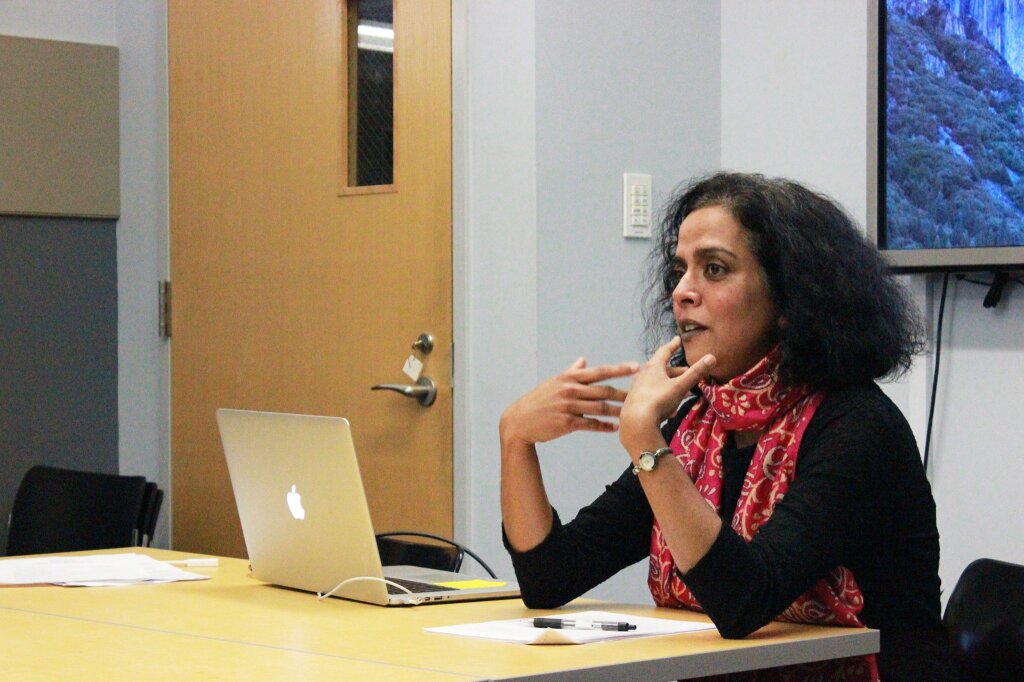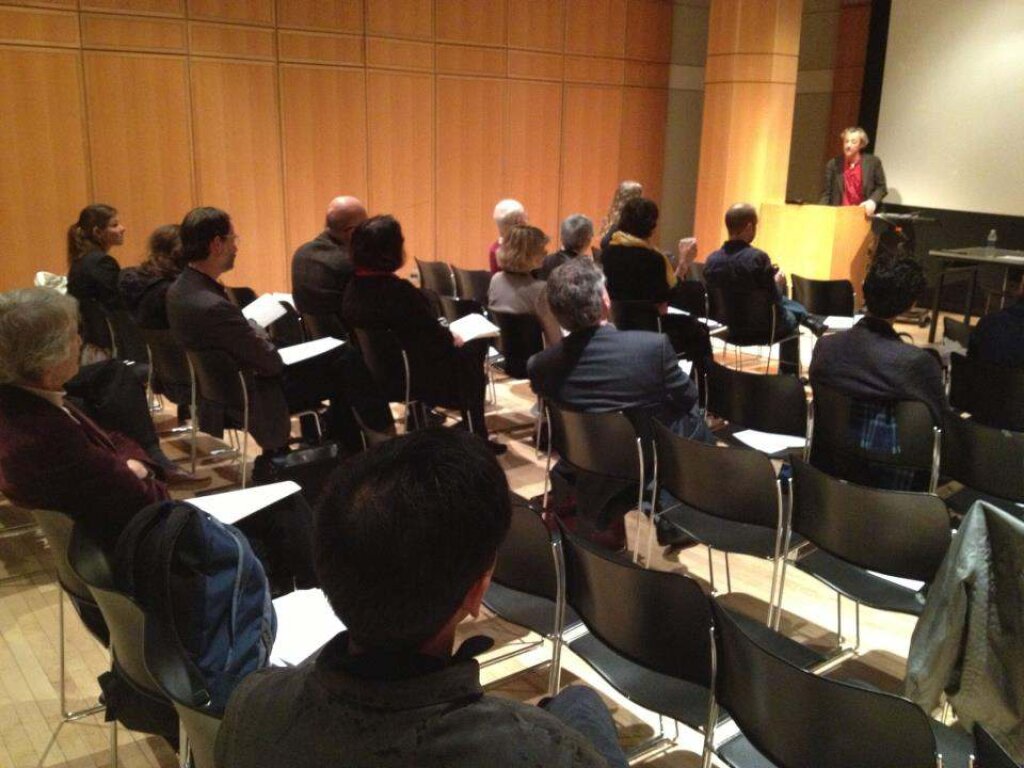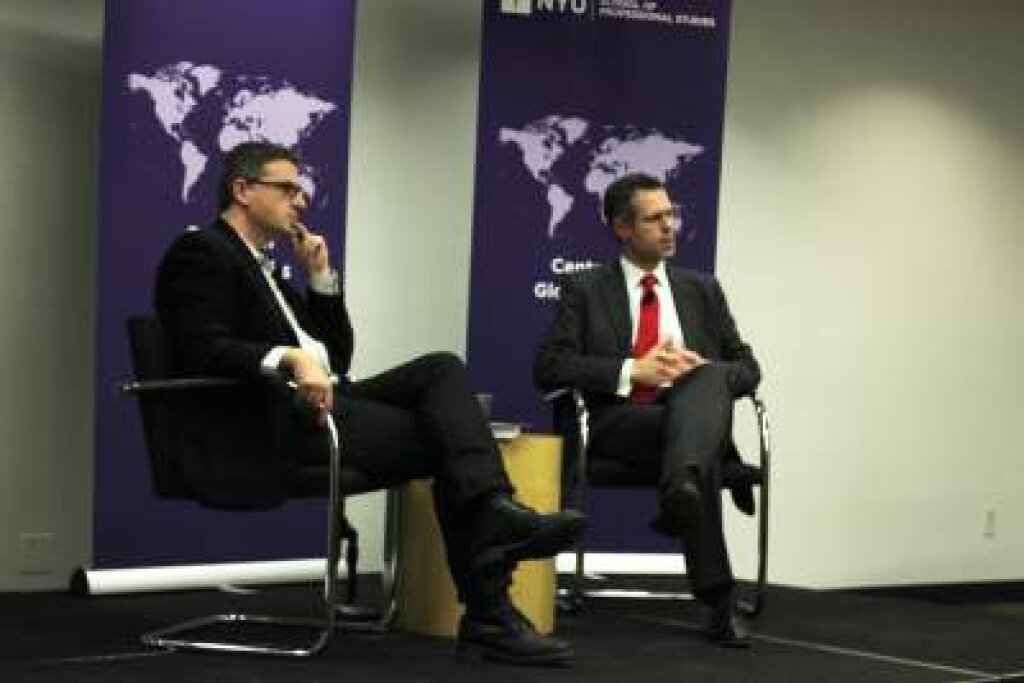On April 8, 2016, the NYU Jordan Center for the Advanced Study of Russia hosted a conference entitled “Radiant Futures: Russian Fantasy and Science Fiction.” After the first panel, NYU Professor of Russian and Slavic Studies Eliot Borenstein introduced keynote speaker Anindita Banerjee. “If we think of our conference and our field in terms of science fiction, then she is Queen of Mars, our Aelita,” Borenstein said. Banerjee, a professor of comparative literature at Cornell University, centered her talk on Aelita, Queen of Mars, a 1924 Soviet silent film directed by Yakov Protazanov based on Alexei Tolstoy’s eponymous novel.
Banerjee’s talk, titled “The Telescope and the Bioscope: Science Fiction Spectacle on the Early Soviet Screen,” targeted the lack of critical attention to Soviet and post-Soviet science fiction media—something particularly ironic, given the prominence of the Soviet space project in the Russian global imaginary. Banerjee explained that her project grew out of her book, We Modern People, which argues that science fiction was not just a literary phenomenon, but an aesthetic as well as ideological platform for negotiating a uniquely Russian vision of being, thinking and acting modern. “I realized even then that science fiction on the screen deserved a sustained study of its own, which attends to its mediatic specificity,” she said. Instead of the traditional focus on production, Banerjee made a point to approach Soviet science fiction cinematography from the side of consumption.
Banerjee started her presentation with a clip from Aelita, which introduces the martian telescope-bioscope, a device that enables observation of life on other planets. Calling the film “the first Soviet experiment in cinematic fiction,” she mentioned that critical work on Aelita has been limited to the role of politics in influencing how the film was made, rather than the study of the film itself. For Banerjee this is peculiar, given that “the cosmos was a unique frontier that was completely mediated through the conjuncture between technology and the imagination.” What’s more, the fascination with outer space emerged almost simultaneously with the advent of cinema.
Looking back at history, Banerjee considered the effect that the astronomical theater had on the Russian public in the early 20th century. By 1901, the three observatories in Moscow, St. Petersburg and Kazan transformed a previously restricted scientific domain into a commercialized exhibition space. Spectators could attend screenings of silent documentaries accompanied by an orator. Technological advances such as spectroscopic lenses made images of space into discernible images, which were often displayed in magazines. “Suddenly clear views across unimaginable distances radically changed the reading public’s mode of locating the self in the world,” Banerjee said.
The self-reflexive power possessed by the cosmos also plays out on the movie screen. Arguing that scientific cinema and literature are more than simply mimetic representational devices for what lies outside their pages and frames, Banerjee said that science fiction in cinema “transform[ed] the modes of seeing, being, thinking and acting encompassed by both ideology and the practices of everyday life.” Aelita, she said, represents a case study of how cinema provided a new interface between science, spectatorship and subjectivity.
Banerjee then screened a second clip from the film, in which Aelita looks through the telescope-bioscope and sees a movie theater on an alternate planet – Earth. Instead of showing Earth as an inanimate object, the device “enables Aelita to inhabit the everyday spaces of everyday life on it,” Banerjee said. With its attention to the apparatus, the scene marks the convergence of the telescopic fantasy of space and the bioscopic fantasy of life. It also is a moment of estranged reversal. Aelita views life on Earth from Mars, and at the same time, the Earthly spectators at the movie theater watch as their own lives unfold on-screen. “By placing the telescope-bioscope front and center, both in the frame and the plot of Protazanov’s movie, it also draws the viewer’s attention to what the device actually visualizes for both the protagonist and the [movie theater] audience,” Banerjee said.
In the Q&A session that followed, Banerjee was able to expand on elements of Aelita and her book, We Modern People. She mentioned that while snippets of early film shown in Aelita through the telescope-bioscope may seem old-fashioned to us in the 21st century, scenes in the film portray modern industrialized cities, tanks, and other war machines that are overpowering and technologically advanced for the time period. Banerjee also referenced her book, drawing a comparison between the national exhibitions that began in the 19th century and the emergence of cinematography. Both media are built on what she called “circuits of contact and contamination,” and invite the self-construction or self-imagination inherent to the modern age. Like cinema, technology was integral national expositions and fairs, providing a similarly immersive and futuristic experience.



